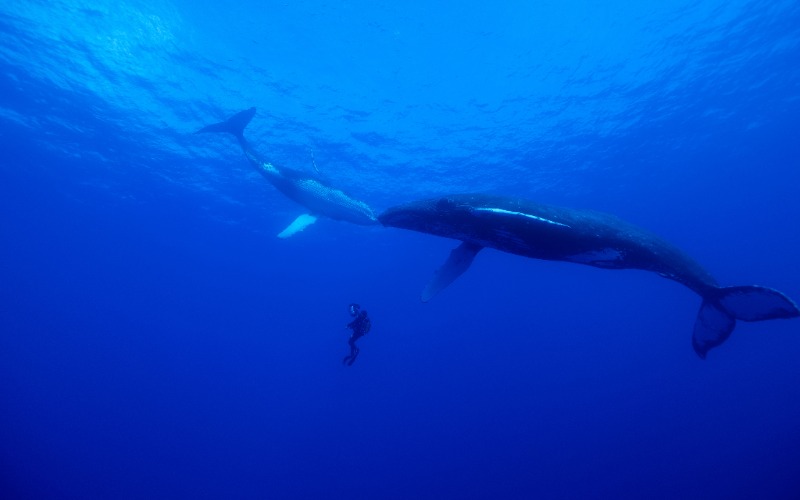Dive into the extraordinary adventures of the natural world with the new series Incredible Animal Journeys, set to premiere on National Geographic on Nov. 19 and Disney+ and Hulu on Nov. 20. Hosted by Jeremy Renner, the show captures animals going on epic migrations that are dangerous but necessary. From the icy terrains of the Antarctic to the deep Pacific Ocean, Incredible Animal Journeys illustrates the strength and determination of diverse species on our planet.
Innovation & Tech Today had the opportunity to speak with Kim Jeffries, the cinematographer and underwater camera person whose work is in the “Ocean Odysseys” episode of the upcoming series. This specific episode partly follows the fascinating journey of a humpback mom leading her newborn calf across the Pacific, risking it all for the next generation. In addition to exploring innovations for wildlife filmmaking, Jeffries shares unique challenges for underwater cinematographers and the role of tech in continuing to foster awareness about wildlife conservation in the future.
Innovation & Tech Today: How has tech evolved in wildlife filmmaking, and what role do you think it plays in capturing animal activity, especially for a series like Incredible Animal Journeys?
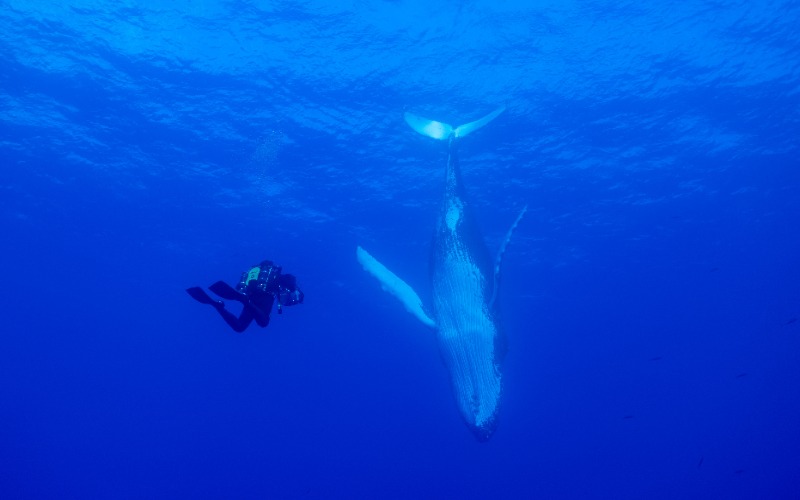
Kim Jeffries: Without all this tech, we wouldn’t be able to capture a lot of these things. We’re using technology that allows us to be completely silent in the field, such as low-light technology. We actually did use that in the humpback whale sequence when we were shooting close to dusk or dawn.
I think tech is just evolving in this really amazing way, and we’ve been able to use it. The speeds we’ve been able to shoot at can capture behaviors that have never been able to be seen by the naked eye. We used tags on humpback whales to capture some of their most intimate moments, and they’ve got data and videos coming out of them for scientists and all these sorts of crazy things that are just going hand in hand in progressing natural history and pushing the limits of what we can film.
I&T Today: What are some unique challenges you faced as a cinematographer while capturing animal migrations? Did tech help overcome that?

Jeffries: One of the things that we use when filming humpback whales is a rebreather. It’s an older technology, but it’s been so good that it’s been around for a really long time. The rebreathers themselves have completely transformed diving. It’s basically a scuba system where you’re recapturing your exhaled breath. We breathe 21% oxygen up here and then exhale around 16%, depending on what we metabolize.
The rebreather takes that air and recaptures it, scrubbing the CO2 out, and then you or the computer adds more oxygen to that to keep it to a survivable level. But the rebreather itself, because it’s recapturing the exhaled breath, allows you to dive completely silently with no bubbles. That sort of tech is pretty much essential in any sort of underwater filming environment.
We’re not disturbing the animals. We’re practically invisible. The animals are still completely sensing and aware that we’re there, but it’s much more accepting. Without that, there’s no way to get these intimate moments, like a baby whale sleeping under its mom.
I&T Today: Can you explain the difference between underwater cinematography and traditional land-based filming?
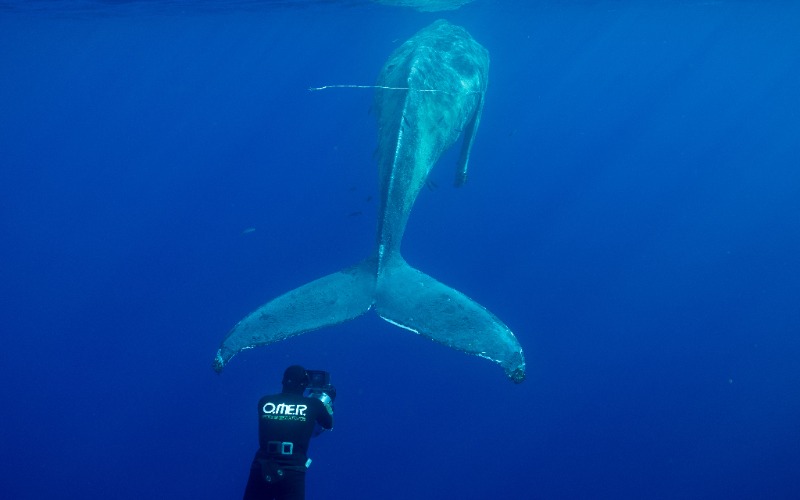
Jeffries: Communication is obviously a big thing. We’re just not communicating at all. Once the dive team is underwater, unless there’s a presenter or host, we don’t have communications. So it’s a two-person team that’s alone in the ocean with surface support. If you’re underwater, there are no comms.
Visibility is another factor. The animals are much harder to track because once they dive, they’re gone. Also, the hazards. It’s not to say that land shoots are without hazards, but we’re not only facing wildlife hazards at this point but also marine traffic and other dangers in the ocean that not only the animals are subject to but us because we’re filming the things they’re encountering.
There’s just so much more equipment too. Everything has to go on its own housing. It’s incredibly physical. I’ve got a rebreather on my back that’s around 50 pounds, plus an extra bailout tank for safety that’s around 30 pounds. I now have an underwater camera that’s roughly 50 pounds on land. So, it’s just an incredibly physical thing that you have to deal with alongside limited visibility. It’s a pretty hostile environment down there.
I&T Today: You mentioned that you don’t have communication once you’re filming. But did you work with scientists during filming? And if you did, how did that collaboration influence the way you filmed the animals?
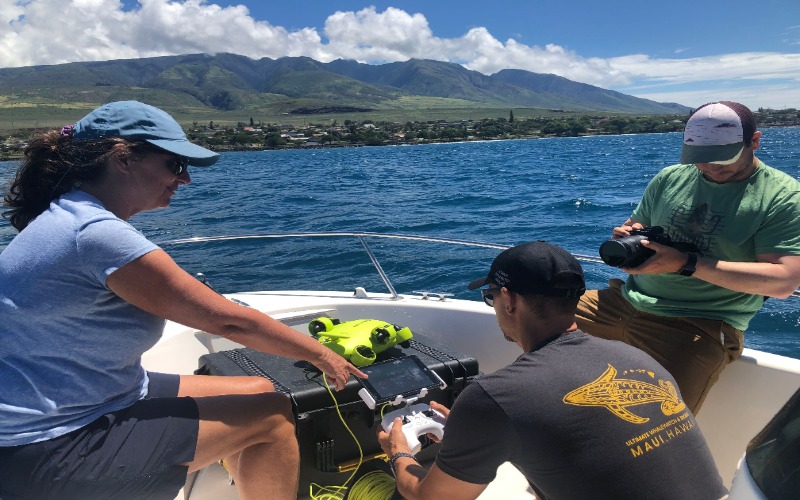
Jeffries: The scientists received all the footage we recorded after the show, and then we also partnered with them to use an ROV (remotely operated vehicle) and a drone. So, the scientist primarily worked with the drone operator. She would gather estimates about the baby humpback’s size and population density.
We did play around with an ROV a little bit. I don’t know that the technology is quite there yet to be on par with a diver underwater. But there are some amazing investments in ROV tech coming out, so I’m interested to see where that’s going.
And then also a lot of this behavior has just never been recorded. So, the pure audio and video data is just so priceless. We recorded two behaviors, both visual and audio, that have just never been done before. That in itself is useful for science.
I&T Today: Could you share a memorable or maybe challenging experience with our readers while you were filming?
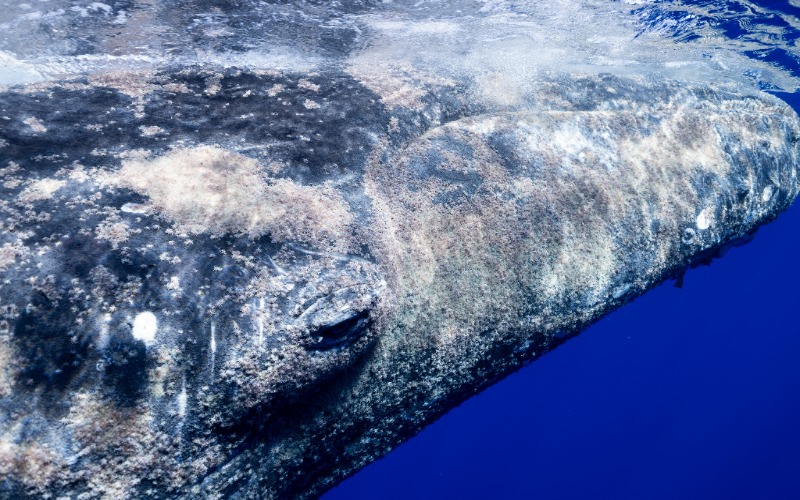
Jeffries: We encountered a fishing gear entanglement on one whale while filming. It was probably one of the most emotional stories I’ve ever had to film. It’s clear that the animals are complex with emotional and social structures. And it’s so clear that there is empathy and support.
Even in the birth sequence for the humpback whale, there is this sense of support and community that you don’t expect animals to have. And for me, that’s incredibly memorable. Hopefully, this translates to other people to inspire them to care just a little bit more and not look at these things as beasts or non-intelligent beings, but really kind of see other inhabitants as sort of sensing creatures deserving of protection.
I&T Today: National Geographic has this magical way of educating and entertaining but also inspiring the audiences to care more about wildlife. What role do you see tech playing in continuing to foster awareness about wildlife conservation in the future?
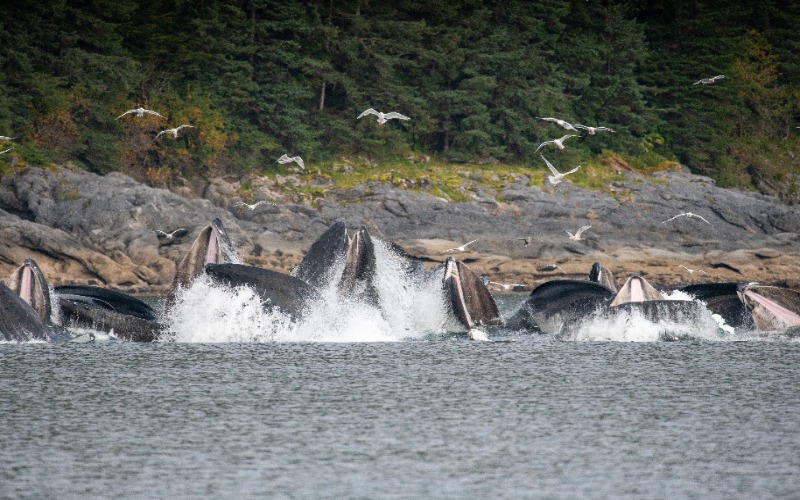
Jeffries: Without tech, none of this is possible. We’ve got cameras that are live-feeding underwater feeds to us 24/7, which is absolutely amazing. And without this nonstop coverage, arguably, we wouldn’t have any of this information. People are saying that, more than ever, we’re seeing animals in different places. But I don’t know if that’s necessarily the case or if it’s even just a single driving factor.
I truly believe that the availability and accessibility of tech to everybody has really changed how we learn and view animal migrations and journeys. I think it’s the access to tech for everyone and the increase in tech that’s available to everyone underwater that is driving this trend toward more information.



